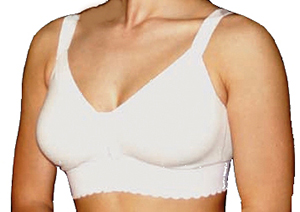Breast Lift Surgery
-
 Medically Reviewed by Charlie Chen, MD | Last updated 10/18/2023
Medically Reviewed by Charlie Chen, MD | Last updated 10/18/2023 - Overview
Overview
What is a breast lift?
A breast lift, also known as mastopexy, is a procedure that seeks to perk up sagging breasts, a condition known as ‘breast ptosis.’ Each year, thousands of women undergo breast lift procedures to restore the shape and volume of their breasts for a more youthful breast contour.
Oftentimes breast lifts are combined with other procedures such as breast enlargement or reduction mammaplasty. In cases like these, the breasts are lifted as they are increased or decreased in size. The result are breasts that look and feel better.
Topics covered on this page
- Cost of breast lift surgery
- Is the cost covered by insurance?
- Are you a candidate?
- What to know beforehand
- Procedure overview
- Recovery time
- When to expect results
- How long will results last?
- Tips for choosing a surgeon
Cost of breast lift surgery
The average cost of breast lift surgery is $5,012 according to the American Society of Plastic Surgeons (ASPS), however this only includes the surgeon’s fee. There are several other factors that can affect the overall cost. Here are some of the top factors:
- Surgeon’s Fee: The experience and reputation of your plastic surgeon can affect the cost. Highly skilled breast lift surgeons often charge a premium for their services.
- Anesthesia: The type of anesthesia used, the duration of the procedure, and the qualifications of the anesthesiologist can influence the anesthesia fees.
- Surgical Facility: These fees cover the usage of the operating room and other associated services. To ensure a safe experience, check to see if your surgical facility is certified by the Accreditation Associations for Ambulatory Health Care (AAAHC).
- Location: The cost of living and the average pricing for medical services in a particular area can affect the cost of your procedure. In general, urban areas tend to have higher procedure fees. If you want to get a rough idea of the prices for medical procedures in your local area, you can use the Healthcare Blue Book, which functions similarly to Kelley Blue Book for estimating car prices.
- Type of Implant: If implants are used, this can increase the overall cost. Silicone implants typically cost more than saline implants. Additionally, if you choose other options like cohesive gel (“gummy bear”) implants, they may have higher costs.
- Complexity of the Procedure: The intricacy of your procedure can affect the cost. If it involves significant reconstruction or additional procedures expect the breast lift cost to be on the higher side
- Medical Care: The care provided before and after affects the overall cost. This includes consultations, medical tests, surgical garments, prescription medications, and follow-up appointments.
- Additional Procedures: Your overall cost may be higher if you’re having other procedures along with your breast lift such as tummy tuck or liposuction surgery.
- Insurance: In certain cases, your breast lift may be covered by insurance if it is deemed medically necessary. In these cases, insurance may cover a portion of the procedure. However, insurance coverage can vary and specific criteria must be met to qualify for coverage.
Taking these factors into account, the total cost of breast lift surgery can range from $5,000 to $15,000. If you are considering breast lift surgery, setup a consultation with a board-certified plastic surgeon. This will allow you to discuss your aesthetic goals and gain a thorough understanding of the specific cost breakdown and factors that pertain to your individual case.
Is the cost covered by insurance?
Breast lift surgery is generally considered a cosmetic procedure, and as such, it’s typically not covered by insurance. However, there are scenarios where insurance might come into play if it’s combined with a medically necessary procedure. For instance, if it’s part of breast reconstruction after a mastectomy or breast reduction surgery to alleviate physical discomfort like chronic back or shoulder pain caused by larger breasts.
Even if a portion of the breast lift procedure is covered, there could still be out-of-pocket expenses related to the cosmetic aspects, such as changes in nipple position or reshaping the breasts for aesthetic purposes.
To fully understand of your coverage, contact your insurance company. They can provide you with specific details about your policy, any requirements, and the documentation necessary for considering coverage.
Is a breast lift right for you?
A good candidate for breast lift surgery typically is someone who is:

Are you a candidate for breast lift surgery?
- In good overall health and at or near their goal weight
- In general, many women are 18+ years old (younger women typically have breasts that are still developing)
- No major medical issues
- Well informed about how the procedure is performed and potential risks
- Has nipples and areolas that point downward
- Has nipples/ areolae sit below the breast crease
- Has Asymmetrical breasts
- Understands the potential effects on breastfeeding
- Has breasts that are sagging
To determine if you could benefit from a breast lift, place a pen in the crease underneath your breast. If the sagging tissue holds the pen in place without the use of your hands, you could likely benefit from a breast lift.
What to know beforehand
- Pregnancy can undo the results. A breast lift should be done after your family is complete. Pregnancy and major weight fluctuation could alter your results.
- A breast lift won’t change the size of your breasts. The goal of a breast lift is to restore your breasts to their youthful shape and position. You will need to add breast augmentation or reduction surgery to change the size.
- Any significant weight gain or loss can change the size, shape, and perkiness of your breasts. In order to preserve the results of your breast lift, you will need to maintain your weight.
- You’ll have scars, but they should fade over a year or two. In rare cases, poor healing can lead to prominent scars, which can usually be hidden by bras and bathing suits.
- The larger the breast, the more it responds to gravity. A breast lift can significantly improve sagging, but larger breasts will begin to sag as time goes on
- Sagging breasts are normal. Generally only teenage women or pre-partum women with little natural tissue will have little to no droop.
Procedure overview
On average, breast lift procedures take between 1 to 3 hours to perform and require general anesthesia. Sometimes the procedure can take longer if breast implants are inserted. The surgical technique used can vary depending on the specific needs and goals of the patient, as well as the plastic surgeon’s expertise. Here is a general overview of how breast lifts are commonly performed:
- Anesthesia: The procedure is typically performed under general anesthesia to ensure that you are asleep and comfortable throughout the surgery.
- Incision Placement: The surgeon will carefully plan and mark the incision pattern based on the degree of breast sagging and the desired outcome. Common incision options include:
- Anchor Incision – This includes one incision around the areola, another along the breast crease horizontally and a third that connects them. This used if there is an extreme degree of sagging. It’s the preferred method if there is also a breast reduction done simultaneously. The downside of this procedure is that it is the most invasive and will leave the most noticeable scarring.
- Lollipop Incision – One incision is made around the areola and a second extends vertically to the crease in the breast, resembling a lollipop. This incision is appropriate for women with moderate sagging.
- Donut Incision – A single incision is made around the areola. This incision is for those who have moderate or mild sagging.
- Crescent Incision – This incision is only on the upper half of the areola. The procedure is appropriate for those with a small degree of sagging.
- Scarless breast lift – This is a procedure that lifts and tightens the breast but does not address sagging. It includes tiny incisions that allow a thin tube (a ‘cannula’) to be inserted in order to disrupt fat cells
- Reshaping & Lifting: Once the incisions are made, the surgeon will lift and reshape the breast tissue, repositioning it to a higher and more youthful position. Excess skin is removed to achieve the desired contour and firmness. The nipple-areola complex is also repositioned to a higher location on the breast mound.
- Areola & Nipple Adjustment: If the size of the areola is a concern, it can be reduced during the surgery to create a more proportionate appearance.
- Closing the Incisions: Once all the needed reshaping and adjustments are complete, the surgeon will carefully close the incisions using sutures. This usually involves using both internal and external stitches, sometimes with absorbable sutures that dissolve over time, or stitches that may need to be removed at a later date.
Following the surgery, dressings and a surgical bra will be applied to support the breasts, minimize swelling, and aid in the healing process.
Recovery time
As with any procedure, the recovery time will vary from patient to patient. On average, most patients can expect to return to work after 1 to 2 weeks, with a majority of the swelling resolving after 3-6 weeks.
When to expect results
Preliminary results of your surgery will be visible immediately, but you will have noticeable amounts of swelling in the first several days after the operation. Swelling will gradually go down over the subsequent weeks, but it is important to understand that it may take 3-6 months before you can appreciate the final results of your surgery. As your incisions heal, the scars may be slightly red, but they will fade to fine white lines that should be inconspicuous within several months to a year or more.
How long will results last?
To answer this question, you have to consider how breasts change over time. Weight gain adds a lot of excess tissue to the breasts; with the added weight, it’s possible that there will be sagging – whether or not there already has been a breast lift surgical procedure done. If you lose weight, the resulting skin without volume will also sag. Thus, to predict how long-lasting your results will be, you have to predict whether you will have additional weight gain – and weight loss in the future.
Pregnancy also makes a big impact on breast tissue. If you become pregnant after you have had a breast lift, the results of the breast lift procedure will be changed.
Breasts also change over time because of the effects of gravity. Thus, over time, your results will start to diminish due to aging.
There are steps you can take to increase the longevity of your breast lift, including:
- Wear a properly fitted, supportive bra
- Sleep on your back
- Don’t smoke
- Maintain a stable weight
- Eat a healthy diet
- Exercise regularly
Tips for choosing a plastic surgeon
It is important to carefully select your breast lift surgeon. The surgeon you choose can significantly impact your surgical outcome and overall satisfaction. Find a plastic surgeon with extensive experience in performing breast lift procedures. Also, make sure that they are board-certified and affiliated with one or more of the following organizations:
- The American Board of Plastic Surgery
- The American Society of Plastic Surgeons
- The Aesthetic Society
EnhanceMyself.com relies on sources such as professional medical organizations, government agencies, academic institutions, and peer-reviewed scientific journals to write it’s articles. Learn more about how we ensure our content is accurate, in-depth, and unbiased by reading our editorial guidelines.
*Medical Disclaimer: This website does not provide medical advice. Read more.


